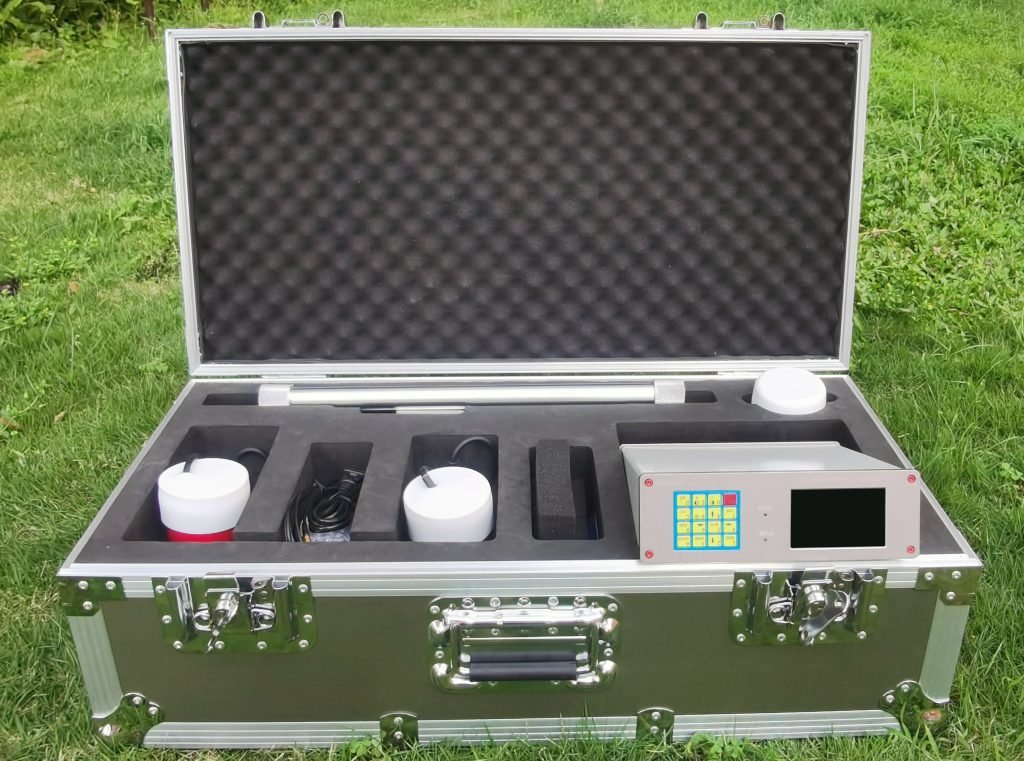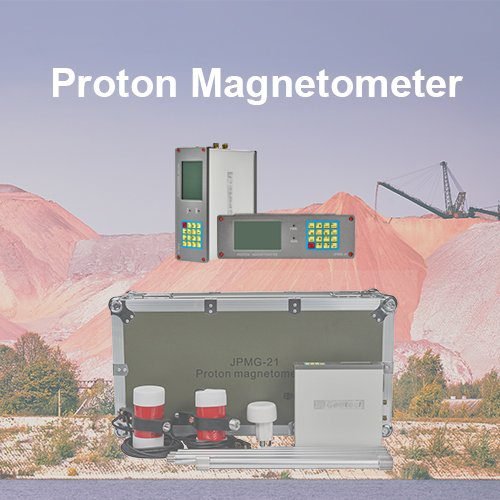Welcome to Geotech!

What is a Proton Magnetometer?
Introduction
A Proton Magnetometer is a sophisticated geophysical instrument used to measure variations in the Earth’s magnetic field with high precision. It is widely used in mineral exploration, archaeological surveys, environmental monitoring, and engineering applications. This article explores the definition, working principles, advantages, and applications of Proton Magnetometers, with a focus on the JPMG Proton Magnetometer from Geotech Instrument Co., Ltd., highlighting its technical specifications and practical applications.

Definition and Working Principle
Definition
A Proton Magnetometer is a type of magnetometer that uses the nuclear magnetic resonance (NMR) of hydrogen protons to measure the strength of the Earth’s magnetic field. It is known for its high sensitivity and stability, making it ideal for detecting subtle magnetic anomalies.
Working Principle
The Proton Magnetometer operates based on the NMR principle. When hydrogen atoms are subjected to an external magnetic field, their protons align with the field. By applying a resonant radio frequency (RF) pulse, the protons become polarized and start precessing around the magnetic field lines. The precession frequency of these protons is directly proportional to the magnetic field strength, allowing the instrument to measure magnetic field variations with high precision.
Key Advantages of Proton Magnetometers
| Feature | Description |
|---|---|
| High Sensitivity | Achieves sensitivities as low as 0.05nT, enabling the detection of subtle magnetic variations. |
| Minimal Temperature Drift | Advanced OCXO (Oven-Controlled Crystal Oscillator) technology ensures exceptional stability, minimizing measurement errors due to temperature changes. |
| Broad Dynamic Range | Dynamic range of 20,000-120,000nT allows accurate measurement in diverse geological environments. |
| Real-Time Data Visualization | Provides immediate feedback through real-time data visualization, enhancing survey efficiency and decision-making. |
Applications of Proton Magnetometers
Mineral Exploration
Proton Magnetometers are widely used in detecting mineral deposits such as iron, copper, and zinc. Their high sensitivity allows for the identification of subtle magnetic anomalies associated with these minerals.
Archaeological Surveys
In archaeology, Proton Magnetometers help locate buried artifacts and structures without invasive excavation. They have been successfully used to map ancient settlements and burial sites.
Environmental Monitoring
Proton Magnetometers aid in environmental studies by detecting underground pipelines and monitoring pollution levels, offering non-invasive solutions for urban planning and infrastructure projects.
Engineering Surveys
For engineering projects, Proton Magnetometers are used to detect underground infrastructure and assess geological conditions, ensuring construction safety and success.
Case Studies
Iron Ore Exploration in Mongolia
In Mongolia’s Gobi region, the JPMG Proton Magnetometer was used to identify potential iron ore deposits. The instrument achieved 150 survey points per day with a repeatability of 0.08nT, successfully mapping three potential deposits through magnetic anomaly analysis.
Archaeological Discovery in Brazil
Brazilian archaeologists used the JPMG Proton Magnetometer to map a 12th-century settlement, detecting buried artifacts at a depth of 2.3 meters without invasive excavation. The high sensitivity and precision of the JPMG provided detailed magnetic anomaly data, enhancing the understanding of the site’s historical significance.
Technical Specifications of the JPMG Proton Magnetometer
| Specification | Value |
|---|---|
| Sensitivity | 0.05nT |
| Dynamic Range | 20,000-120,000nT |
| Resolution | 0.01nT |
| Absolute Accuracy | ±0.1nT |
| Sampling Rate | 3-60 seconds (Mobile Mode); 3-3600 seconds (Base Mode) |
| Gradient Tolerance | >5000nT/m |
| Operating Temperature | -40°C to +55°C |
| Protection Rating | IP67 |
Comparison with Traditional Methods
Traditional Magnetometers
- Limitations: Lower sensitivity, susceptibility to temperature drift, and high noise levels.
- Cost and Efficiency: Multiple survey passes and additional equipment increase costs and reduce efficiency.
Proton Magnetometers
- Superior Performance: Higher sensitivity, minimal temperature drift, and enhanced data quality.
- Cost-Effectiveness: Higher efficiency and accuracy reduce the need for repeat surveys, lowering overall exploration costs.
Future Outlook
As geological exploration demands evolve, Proton Magnetometers will continue to play a crucial role in providing high-resolution magnetic data. Advancements in AI and data analytics will further enhance their capabilities, supporting more efficient and precise geological surveys.
Conclusion
Proton Magnetometers, with their exceptional sensitivity and stability, have become indispensable tools in modern geological exploration. The JPMG Proton Magnetometer, with its 0.05nT sensitivity and OCXO technology, sets a new standard in geomagnetic surveying. Geotech Instrument Co., Ltd. invites professionals to experience the enhanced accuracy and efficiency provided by the JPMG Series, revolutionizing geological exploration with cutting-edge technology.
-1.png)


